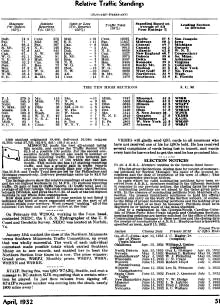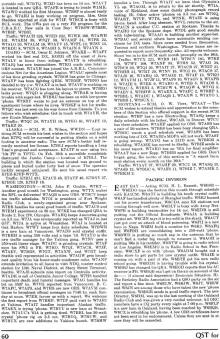April 1932 QST
 Table
of Contents Table
of Contents
Wax nostalgic about and learn from the history of early electronics. See articles
from
QST, published December 1915 - present (visit ARRL
for info). All copyrights hereby acknowledged.
|
We take wireless communications for granted.
Just as people my age thought pocket-size transistor radios that ran on 9V batteries
were always available, today's kids give no thought to whether there was a time
when everyone did not carry a cellphone around. FM radio, if listened to at all
nowadays, is likely either via an Internet connection or via an embedded FM radio
IC in his/her phone, with ear bud wires acting as an antenna. It is obviously no
big deal, since it always was so.
In the early part of the last century most people did not own any sort of radio
- not even a commercial AM broadcast receiver. Having something as mysterious as a shortwave
"rig" was an indication of technical prowess since many operators built their own
equipment from kits or schematics. Participation in amateur radio worldwide was huge at
the time, which is amazing given the amount of work required to set up even a relatively
simple CW (Morse code) setup. The American Amateur Radio League (ARRL) published
extensive lists of reported contacts ("QSLs" in Ham-ese) every couple months. Purely
for illustrative purposes, I have posted all 15 pages of very tiny print as submitted
by operators for the April 1932 edition of QST magazine. The effort required to
assimilate and type in all the names, locations, call signs, etc., was enormous,
especially since the information arrived in an envelope via postal mail - no e-mail
or phone calls. No doubt a lot of errors crept in, but who would ever know?! If you
had a father or grandfather (or occasionally mother or grandmother) who dabbled
in the wireless craft, why not scan the pages to see if you can find him (or sometimes
her)?
Relative Traffic Standings
Posted July 3, 2023
(updated from original post
on 4/30/2013)
|











































